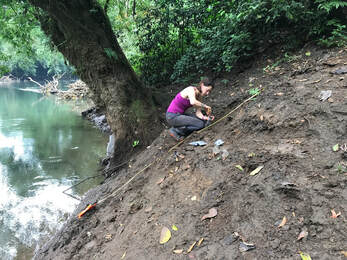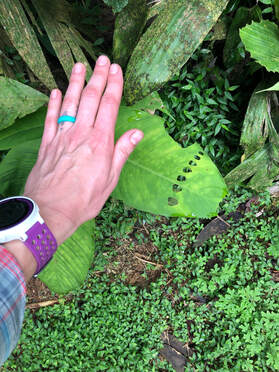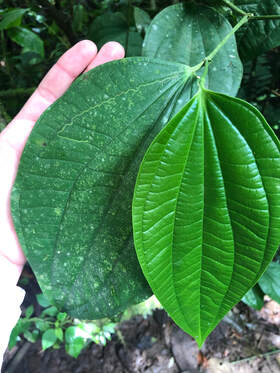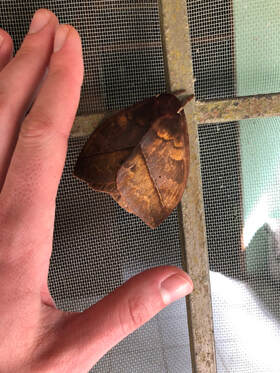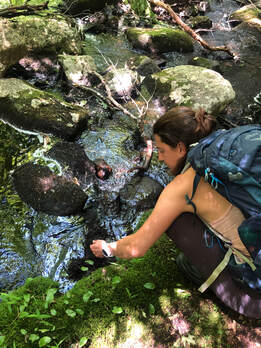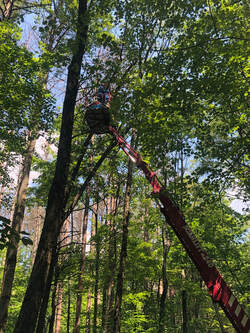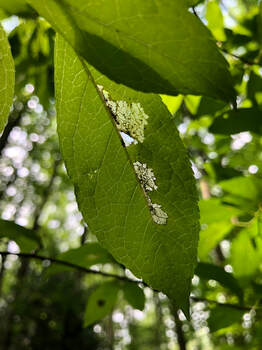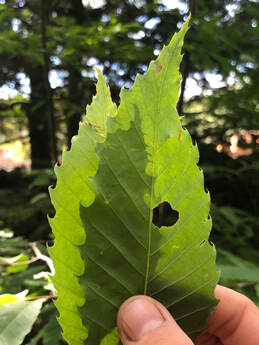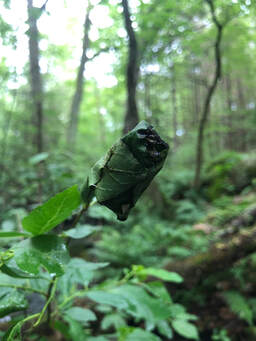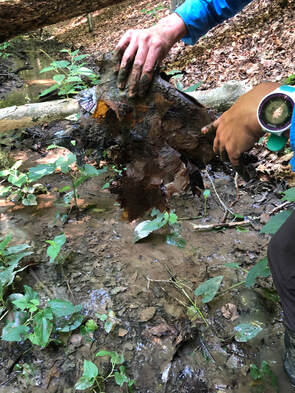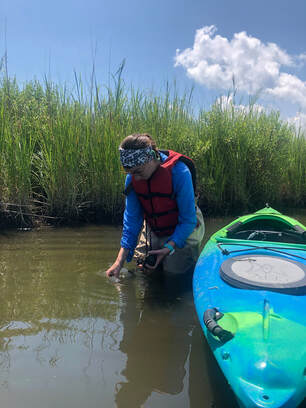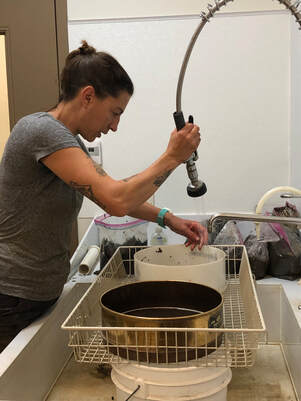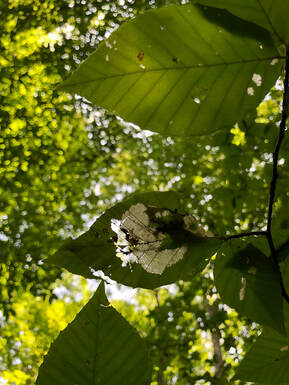While studying the plant and insect communities of the late Paleocene-early Eocene of the Hanna Basin, Wyoming, I became more and more interested in what was influencing these relationships. What factors, either abiotic or biotic, influenced these communities and did those relationships hold true across ecosystems? To understand our fossil record more completely, we must look to the modern as an example of how, what and where relationships between plant and insect species are similar, and where they are different.
Much research has been done by modern ecologists to investigate how abiotic and biotic factors influence plants and insects but the methodology doesn't quite work for examining the fossil record. To solve this issue, I am using paleobotanical methods within modern ecosystems and creating a dataset that is comparable to the fossil record. I am sampling within tropical and temperate forests and more specifically, within the facies or habitats, that fossil leaves are predominantly preserved in. Dynamic and tributary river systems, and swamps were targeted at all three of my sampling locations. Unlike modern ecologists, I dig like a paleontologist. By isolating leaves within the fine-sediment I am inherently sampling the fossil record (given a few million of years). Once leaves have been collected and processed, I examine them as if they were fossils utilizing the Guide to Insect (and Other) Damage Types on Compressed Plant Fossils (version 3.0) by Conrad Labandeira et al. and the Manual of Leaf Architecture by Beth Ellis et al. Additionally, I record leaf trait information for future analyses. Lastly, I collect sediment samples to examine the organic chemical signal preserved to compare that to what we find within the organic geochemical record.
If you have any questions about my research projects, interests, or future collaborations, please email me.
Much research has been done by modern ecologists to investigate how abiotic and biotic factors influence plants and insects but the methodology doesn't quite work for examining the fossil record. To solve this issue, I am using paleobotanical methods within modern ecosystems and creating a dataset that is comparable to the fossil record. I am sampling within tropical and temperate forests and more specifically, within the facies or habitats, that fossil leaves are predominantly preserved in. Dynamic and tributary river systems, and swamps were targeted at all three of my sampling locations. Unlike modern ecologists, I dig like a paleontologist. By isolating leaves within the fine-sediment I am inherently sampling the fossil record (given a few million of years). Once leaves have been collected and processed, I examine them as if they were fossils utilizing the Guide to Insect (and Other) Damage Types on Compressed Plant Fossils (version 3.0) by Conrad Labandeira et al. and the Manual of Leaf Architecture by Beth Ellis et al. Additionally, I record leaf trait information for future analyses. Lastly, I collect sediment samples to examine the organic chemical signal preserved to compare that to what we find within the organic geochemical record.
If you have any questions about my research projects, interests, or future collaborations, please email me.
